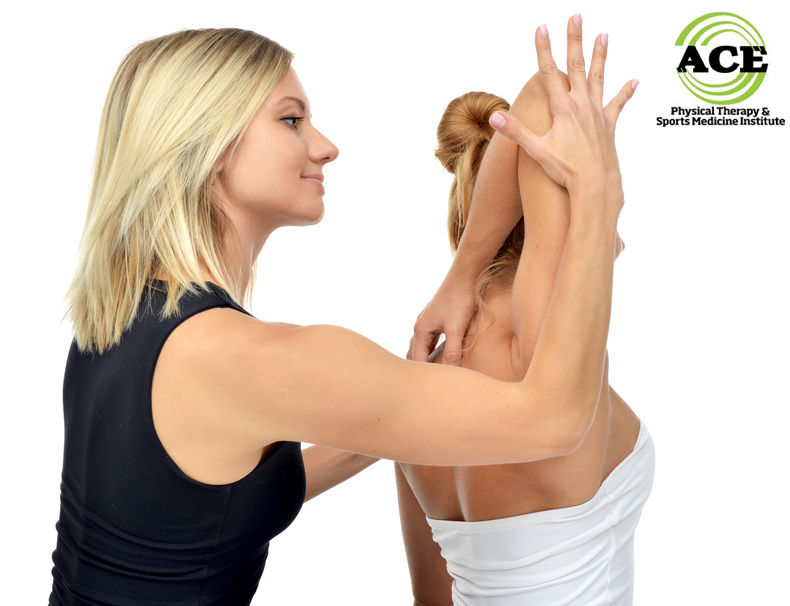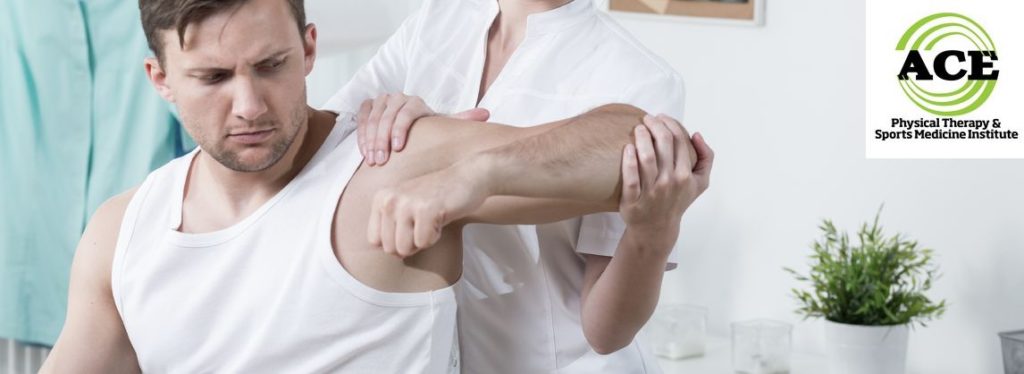CONSERVATIVE TREATMENT OF SLAP TEARS

Tid Bits of Info
- SLAP: SUPERIOR LABRUM ANTERIOR TO POSTERIOR.
- Common symptoms: pain, clicking in the shoulder, weakness and catching.
- Most SLAP tears can be positively diagnosed with a MRI with dye.
- Rehabilitation of a surgically repaired SLAP tear can take up to 9-12 months.
- Seek the advice and treatment of a Physical Therapist if you have shoulder pain.
If your shoulder hurts when you lift your arm over your head or when you reach into the back seat, you might have a Superior Labrum Anterior to Posterior (SLAP) lesion. You may also you feel a sharp, pop-like pain in your shoulder. If tests confirm that this is a SLAP tear, the doctor will probably send you to physical therapy to learn an exercise regimen that can help rehabilitation. In some cases, surgery will also be required.
What is a SLAP tear?
A SLAP lesion is a tear to the top part of the labrum where the long head of the biceps tendon attaches. The tear occurs in both the anterior and posterior portion the glenoid labrum. The lesion occurs where the long head of the biceps tendon attaches and the tendon may be involved or the cause of the injury.
The shoulder joint consists of the humerus, scapula and clavicle. The humeral head is a round ball that rests on the portion of the scapula called the glenoid fossa. The round ball sits on the fossa similarly to a golf ball on a tee. The glenoid labrum is a band of cartilage that surrounds the head of the humerus in your shoulder joint. The labrum helps deepen the socket by 2-3 centimeters, allowing for more stability in the shoulder. The glenoid labrum also serves as an attachment site for other structures in your shoulder such as the long head of your biceps tendon. The glenoid labrum is made of fibrocartilage and it does not heal well due to a lack of blood flow to the cartilage.
A SLAP TEAR in the shoulder can occur during one traumatic incident or over an extended period of time due to cumulative events. Injuries that occur overtime are common in overhead athletes (baseball, tennis), weightlifters and workers that constantly raise their arms above shoulder level. Some tears occur due to weak musculature surrounding the shoulder, which in turn puts too much pressure on the labrum itself during shoulder activities. Common symptoms of a SLAP tear are: pain when the shoulder is in specific positions, a popping or catching sensation in your shoulder, shoulder weakness that may lead to disuse and pain when lifting heavy objects overhead.
Treatment of SLAP Tear
Based on the diagnosis of your SLAP tear, your doctor will most likely refer you to physical therapy. Physical therapy is the best non-operative treatment. Physical therapists specialize in human movement and are the best healthcare professionals to treat labral tears via conservative methods. Your physical therapist will tailor a specific exercise program for you based on the extent of injury and the symptoms you present with.
Your physical therapy will most likely contain exercises that strengthen your rotator cuff muscles which work together to dynamically stabilize the humeral head in your shoulder joint. There will be exercises to strengthen the scapula stabilizing muscles and stretches to increase the flexibility of the shoulder joint. A recent study reported that posterior capsule (a fibrous, leather-like structure that adds a great deal of static stability) tightness in the shoulder is often a common factor noted with SLAP tears. Self-stretches and manual therapy via your physical therapist will aid in loosening the posterior capsule. Core exercises should be implemented to strengthen the foundation of your body.
A recent study showed that conservative, or non-operative, treatment of superior labral tears resulted in improvements in pain relief, shoulder function, and overall quality of life. If surgery is required any exercise that was performed during a conservative rehabilitation program will help to prepare the shoulder for the post-operative program.
Seeking advice and treatment from a Physical Therapist is easy and does not require a visit to your doctor. Your insurance policy might require that you have a referral from your general practitioner, but you do not need a doctor’s prescription for Physical Therapy.
SLAP tears are usually more of a nuisance than anything else. They can cause pain and functional limitations but most people can live a very active lifestyle with a SLAP tear. The decision to “fix it” surgically is personal and usually stems from the discomfort that occurs with common, every day activities. SLAP tears that are surgically corrected do well, but take several months to heal completely. If you suspect that you might have a SLAP tear, seek a diagnosis and then decide how you want to treat it.

























